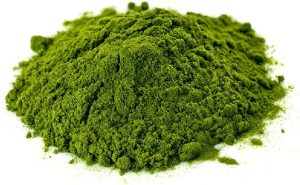
- Overview of Vitamin E a.k.a Tocopheryl Acetate
- Brief History of Vitamin E, a.k.a Tocopheryl Acetate
- Functions of Vitamin E, a.k.a Tocopheryl Acetate
- Recommended Daily Intake (RDI), Recommended Dietary Allowance (RDA), Adequate Intake (AI) or Reference Nutrient Intake (RNI) for Vitamin E, a.k.a Tocopheryl Acetate
- Deficiency of Vitamin E, a.k.a Tocopheryl Acetate
- Food Sources of Vitamin E, a.k.a Tocopheryl Acetate and Where to Get it From
- Vitamin E, a.k.a Tocopheryl Acetate and Its Interaction with Other Medications
- Websites and Articles to Delve into the Benefits of Vitamin E, a.k.a Tocopheryl Acetate
- Disclaimer
Overview of Vitamin E a.k.a Tocopheryl Acetate
Vitamin E, known as tocopheryl acetate in cosmetic and skincare formulations, is a fat-soluble antioxidant crucial for maintaining skin health.
Renowned for its protective properties, it combats free radicals generated by environmental factors like UV rays and pollution. Tocopheryl acetate is a common ingredient in skincare products due to its moisturizing effects, contributing to skin hydration and suppleness. Recognized for potential anti-aging benefits, it may reduce the appearance of wrinkles and promote natural healing processes. Widely used in creams, lotions, and serums, tocopheryl acetate is generally safe for topical application, though individuals with allergies should exercise caution.
Patch testing is recommended to ensure compatibility, and consultation with a healthcare professional is advisable for specific skincare concerns.
Brief History of Vitamin E, a.k.a Tocopheryl Acetate
The discovery of Vitamin E dates back to the early 20th century. In 1922, researchers Herbert McLean Evans and Katherine Scott Bishop conducted experiments on rats, identifying a dietary factor essential for reproduction. This factor was later named Vitamin E. The term “tocopherol” was coined by the Swiss chemist Paul Karrer, who isolated the vitamin in 1936.
Tocopheryl acetate, a stable form of Vitamin E, became popular in skincare and cosmetics. Its use in beauty products surged due to its antioxidant properties and potential benefits for skin health. Vitamin E’s role as a protective and moisturizing agent made it a staple in the skincare industry, where it is commonly found in various formulations.
Over the years, research has explored Vitamin E’s broader health implications, including its antioxidant effects and potential contributions to overall well-being. While tocopheryl acetate remains a key ingredient in skincare, ongoing studies continue to uncover new aspects of the vitamin’s role in human health.
| Time Period | Key Events and Individuals |
|---|---|
| Early 20th Century | – 1922: Herbert McLean Evans and Katherine Scott Bishop identify a dietary factor essential for reproduction in rats, later named Vitamin E. |
| – 1936: Swiss chemist Paul Karrer isolates Vitamin E and coins the term “tocopherol.” | |
| Emergence in Skincare | – Tocopheryl acetate, a stable form of Vitamin E, gains popularity in skincare and cosmetics. |
| – Its antioxidant properties and potential benefits for skin health contribute to its widespread use in beauty products. | |
| Broader Health Implications | – Over the years, research explores Vitamin E’s broader health implications, including its antioxidant effects and contributions to overall well-being. |
| Ongoing Studies | – Tocopheryl acetate remains a key ingredient in skincare formulations. |
| – Ongoing studies continue to uncover new aspects of Vitamin E’s role in human health. |
This table summarizes the key events and developments related to the discovery of Vitamin E, its emergence in skincare, and ongoing research into its broader health implications.
Functions of Vitamin E, a.k.a Tocopheryl Acetate
Vitamin E, a fat-soluble vitamin, plays crucial roles in various physiological functions within the body. Here are some of its primary functions:
- Antioxidant Protection:
- Vitamin E is a potent antioxidant that helps protect cells from damage caused by free radicals. Free radicals are unstable molecules produced during normal metabolic processes and in response to environmental stressors such as UV radiation and pollution. By neutralizing free radicals, Vitamin E contributes to the overall health of cells and tissues.
- Skin Health:
- Vitamin E is known for its positive effects on skin health. It helps maintain skin integrity by protecting it from oxidative stress, reducing the risk of premature aging, and supporting the skin’s natural healing processes. Tocopheryl acetate, a form of Vitamin E, is commonly used in skincare products for its moisturizing and antioxidant properties.
- Immune System Support:
- Vitamin E supports the immune system by promoting the proper functioning of immune cells. It enhances the body’s ability to mount an effective defense against infections and illnesses.
- Cardiovascular Health:
- Vitamin E may contribute to cardiovascular health by preventing the oxidation of low-density lipoprotein (LDL) cholesterol. Oxidized LDL cholesterol is implicated in the development of atherosclerosis, a condition that can lead to heart disease.
- Eye Health:
- Vitamin E, in combination with other antioxidants, plays a role in maintaining eye health. It may help protect the eyes from age-related macular degeneration and other oxidative stress-related conditions.
- Cell Signaling:
- Vitamin E is involved in cell signaling processes, helping to regulate various cellular activities. It may influence gene expression and contribute to the proper functioning of cells.
- Neurological Function:
- Vitamin E is present in high concentrations in the brain, and it may play a role in protecting nerve cells. Some studies suggest that Vitamin E may have neuroprotective effects and could be beneficial in conditions affecting the nervous system.
It’s important to note that while Vitamin E is essential for health, excessive supplementation can lead to adverse effects. As with any nutrient, it’s best to obtain Vitamin E through a balanced and varied diet that includes sources such as nuts, seeds, vegetable oils, and leafy green vegetables. Before starting any supplementation, individuals should consult with a healthcare professional to determine their specific needs.
Recommended Daily Intake (RDI), Recommended Dietary Allowance (RDA), Adequate Intake (AI) or Reference Nutrient Intake (RNI) for Vitamin E, a.k.a Tocopheryl Acetate
The Recommended Dietary Allowance (RDA) for vitamin E varies by age and gender, and it is expressed in milligrams of alpha-tocopherol equivalents (α-TE). The values below are general guidelines, and individual needs may vary:
- Infants (0-6 months): 4 mg α-TE
- Infants (7-12 months): 5 mg α-TE
- Children (1-3 years): 6 mg α-TE
- Children (4-8 years): 7 mg α-TE
- Children (9-13 years): 11 mg α-TE
- Adolescents (14-18 years): 15 mg α-TE
- Adults (19 years and older): 15 mg α-TE
Pregnant and lactating women have slightly higher RDAs:
- Pregnant adolescents (14-18 years): 15 mg α-TE
- Pregnant adults (19 years and older): 15 mg α-TE
- Lactating adolescents (14-18 years): 19 mg α-TE
- Lactating adults (19 years and older): 19 mg α-TE
It’s important to note that these values are subject to change, and individuals with specific health conditions or dietary concerns should consult with healthcare professionals for personalized recommendations. Additionally, the units of measurement may vary depending on the region and health authority. Always refer to the most recent dietary guidelines for the latest recommendations.
Deficiency of Vitamin E, a.k.a Tocopheryl Acetate
Vitamin E deficiency is relatively rare but can have significant health implications when it occurs. Since vitamin E is a fat-soluble vitamin with antioxidant properties, its deficiency primarily affects tissues sensitive to oxidative damage. Here are some potential consequences and symptoms of vitamin E deficiency:
- Neurological Issues:
- Vitamin E is crucial for maintaining the health of nerve cells. Deficiency may lead to neurological problems, including muscle weakness, loss of coordination, and impaired reflexes. In severe cases, it can result in nerve damage.
- Vision Problems:
- Vitamin E deficiency may contribute to retinal degeneration, leading to vision problems. The retina, as a highly oxygen-consuming tissue, is vulnerable to oxidative stress.
- Weakened Immune Function:
- Vitamin E plays a role in supporting the immune system. Deficiency might compromise the body’s ability to defend against infections, making individuals more susceptible to illnesses.
- Muscle Weakness and Atrophy:
- Insufficient vitamin E can result in muscle weakness and, in severe cases, muscle atrophy. This is particularly relevant to skeletal muscles.
- Anemia:
- While vitamin E deficiency is not a direct cause of anemia, it may exacerbate the effects of iron deficiency anemia. Vitamin E helps protect red blood cells from oxidative damage.
- Vision and Eye Health:
- In addition to retinal degeneration, vitamin E deficiency may contribute to conditions like cataracts, affecting overall eye health.
- Impaired Fertility:
- Vitamin E is involved in reproductive health. Deficiency may impact fertility, especially in males, by affecting sperm motility and function.
Causes of vitamin E deficiency may include inadequate dietary intake, malabsorption issues (such as certain digestive disorders), and rare genetic disorders affecting vitamin E metabolism. Individuals at risk include those with certain medical conditions, premature infants, and those with fat malabsorption disorders like cystic fibrosis.
Treatment involves addressing the underlying cause and supplementing vitamin E when necessary. However, supplementation should be done under medical supervision, as excessive vitamin E intake can lead to adverse effects.
Food Sources of Vitamin E, a.k.a Tocopheryl Acetate and Where to Get it From
Vitamin E is found in a variety of foods, with plant-based sources being particularly rich in this fat-soluble vitamin. Here are some common food sources of vitamin E:
- Nuts and Seeds:
- Almonds, sunflower seeds, hazelnuts, pine nuts, peanuts (and peanut butter), pumpkin seeds
- Vegetable Oils:
- Wheat germ oil, sunflower oil, safflower oil, olive oil, soybean oil
- Green Leafy Vegetables:
- Spinach, swiss chard, kale, turnip greens, collard greens
- Fruits:
- Kiwi, mango, blackberries, avocado
- Fortified Foods:
- Some breakfast cereals, juices, and spreads may be fortified with vitamin E.
- Whole Grains:
- Whole grains like wheat germ, brown rice, and oats contain vitamin E.
- Seafood:
- Certain types of fish, such as salmon and trout, contain vitamin E.
- Shellfish:
- Shrimp and lobster also contain small amounts of vitamin E.
It’s important to note that vitamin E is sensitive to heat, so cooking methods that involve high temperatures for prolonged periods may lead to some loss of vitamin E content. Eating a varied and balanced diet that includes a mix of these vitamin E-rich foods can help ensure an adequate intake.
While vitamin E supplements are available, it’s generally recommended to obtain nutrients through a diverse and nutrient-rich diet. If you have specific dietary concerns or conditions that may affect nutrient absorption, it’s advisable to consult with a healthcare professional or a registered dietitian for personalized guidance.
Vitamin E, a.k.a Tocopheryl Acetate and Its Interaction with Other Medications
Vitamin E can interact with certain medications, and it’s important to be aware of these interactions to prevent potential adverse effects or reduced drug efficacy. Here are some examples of medications that may interact with vitamin E:
- Anticoagulants (Blood Thinners):
- Vitamin E has antiplatelet effects and may increase the risk of bleeding, especially when taken in high doses. Individuals taking anticoagulant medications such as warfarin (Coumadin) should use vitamin E supplements with caution and under the supervision of a healthcare professional.
- Antiplatelet Drugs:
- Similar to anticoagulants, medications with antiplatelet effects, like aspirin and clopidogrel (Plavix), may increase the risk of bleeding when combined with high doses of vitamin E.
- Cyclosporine:
- Cyclosporine, an immunosuppressive medication commonly used in transplant recipients, may be less effective when taken with vitamin E. It’s important for individuals on cyclosporine therapy to consult their healthcare provider before taking vitamin E supplements.
- Chemotherapy Drugs:
- Some studies suggest that high doses of vitamin E might interfere with the effectiveness of certain chemotherapy drugs. Cancer patients undergoing chemotherapy should discuss vitamin E supplementation with their oncologist.
- Statins:
- Some evidence suggests that vitamin E may reduce the effectiveness of statin medications used to lower cholesterol. However, more research is needed to confirm this interaction.
- Orlistat:
- Orlistat, a medication used for weight loss, may reduce the absorption of fat-soluble vitamins, including vitamin E. Taking a multivitamin supplement at a different time of day than orlistat may help prevent potential deficiencies.
It’s crucial to inform your healthcare provider about all medications, supplements, and vitamins you are taking. They can provide personalized advice based on your specific health condition and medication regimen. If you are considering taking vitamin E supplements, consult with your healthcare provider to ensure it is safe and appropriate for your individual needs. Self-prescribing high doses of vitamin E without professional guidance can lead to adverse effects and potential interactions with medications.
Websites and Articles to Delve into the Benefits of Vitamin E, a.k.a Tocopheryl Acetate
Vitamin E is a crucial nutrient with various health benefits, ranging from antioxidant properties to skin health support. If you’re looking to delve deeper into the world of Vitamin E, these websites provide comprehensive information, research findings, and practical insights:
- National Institutes of Health (NIH) – Office of Dietary Supplements:
- World Health Organization (WHO):
- Mayo Clinic:
- Harvard T.H. Chan School of Public Health:
- WebMD:
- National Center for Biotechnology Information (NCBI):
- Research articles, studies, and scholarly papers on Vitamin E.
- Linus Pauling Institute – Micronutrient Information Center:
- Cleveland Clinic:
- MedlinePlus – National Library of Medicine:
- Healthline:
- ScienceDirect:
Whether you’re a health enthusiast, student, or healthcare professional, these websites offer a wealth of information to deepen your understanding of Vitamin E and its multifaceted roles in human health. Always consult with healthcare professionals for personalized advice and recommendations.
Disclaimer
The information is solely provided for educational purposes. It is not intended to diagnose, treat, cure, or prevent any disease. Seek the advice of your physician or qualified healthcare provider with any questions you may have regarding a medical condition at all times. Never disregard professional medical advice because of something you have read or learned from this article.






